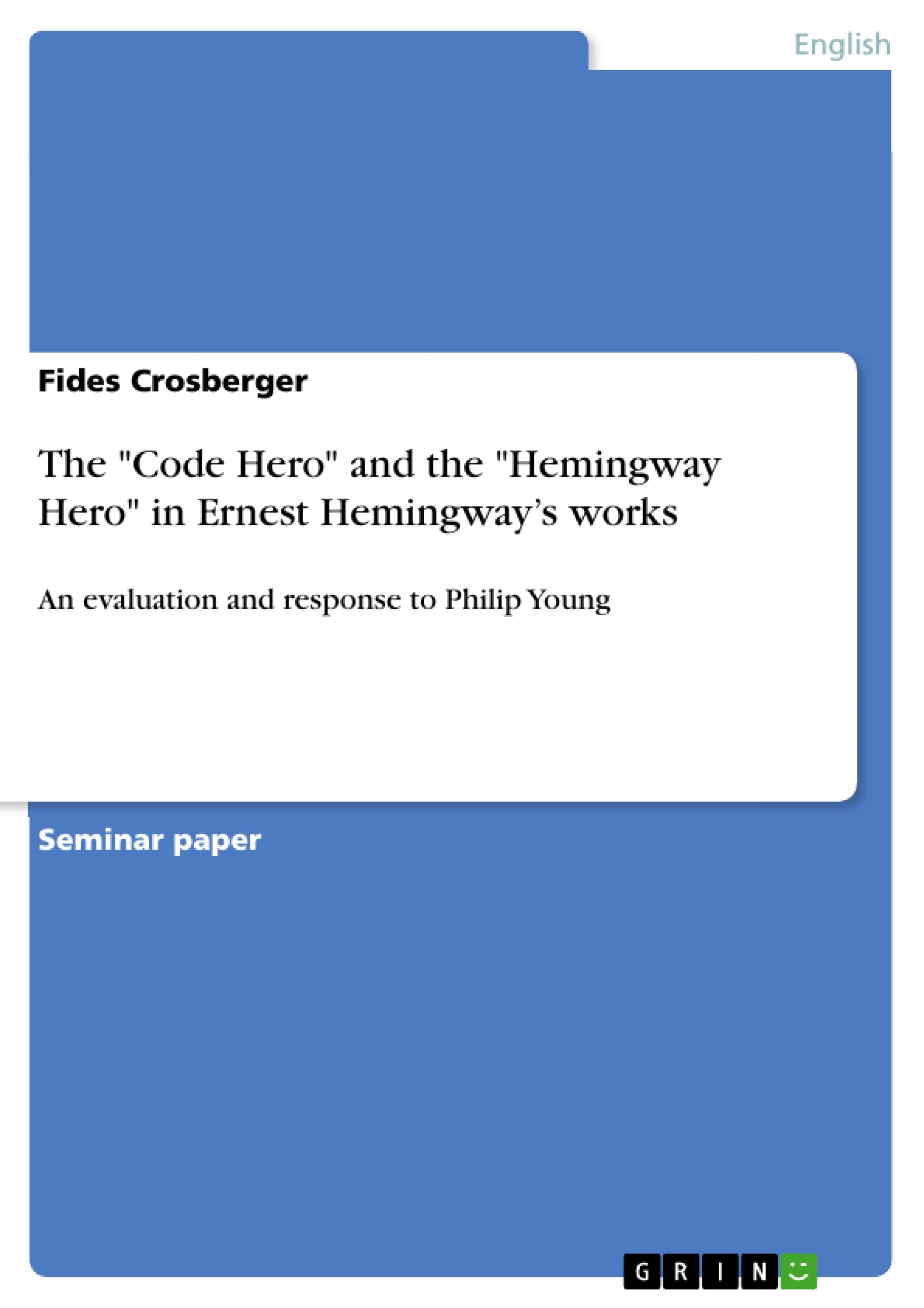Hemingway’s novels and short stories have always been a topic of discussion among scholars for the last century. Widely discussed are the prevalent themes in his works such as sexuality, masculinity and femininity and other gender related topics. While he is praised by some of them, others view his works more critically. One of the most well-known and considered as the first serious Hemingway scholar is Philip Young. Young’s most influential approach towards Hemingway’s works is the classification of the male characters into two different categories, the “Code Heroes” and the “Hemingway Heroes”.
While Young’s theory is mostly well-recognized, subject of this paper shall be to prove with the help of Hemingway’s short story “A Clean, Well-Lighted Place” that it is not always possible to apply it to all of Hemingway’s works.
Table of Contents
- Introduction to the thesis
- The "Code Hero" and the “Hemingway Hero” according to Young
- Evidence from "A Clean, Well-Lighted Place" showing limitations to Young's argument
- Review of the other scholars who disagree with Young
- Conclusion
Objectives and Key Themes
The paper aims to demonstrate the limitations of Philip Young's theory of "Code Heroes" and "Hemingway Heroes" by analyzing Ernest Hemingway's short story "A Clean, Well-Lighted Place." The paper argues that Young's classification of male characters in Hemingway's works is not always applicable and that focusing solely on one aspect of Hemingway's writing misses his diverse style.
- The "Code Hero" and "Hemingway Hero" concept proposed by Philip Young
- Analysis of "A Clean, Well-Lighted Place" to challenge Young's theory
- The portrayal of masculinity and despair in Hemingway's works
- The importance of recognizing the complexity and variety in Hemingway's writing
- The role of dialogue and character interaction in understanding Hemingway's themes
Chapter Summaries
- Introduction to the thesis: This chapter introduces Philip Young's influential theory of "Code Heroes" and "Hemingway Heroes," highlighting its widespread acceptance. The paper sets out its objective to challenge Young's theory by analyzing "A Clean, Well-Lighted Place." It argues that focusing solely on one aspect of Hemingway's work misses his diversity and complexity.
- The "Code Hero" and the “Hemingway Hero” according to Young: This chapter outlines Young's theory, describing the characteristics of both "Code Heroes" and "Hemingway Heroes." It emphasizes the "code" as a set of beliefs and attitudes that allow heroes to navigate a world filled with disorder and misery.
- Evidence from "A Clean, Well-Lighted Place" showing limitations to Young's argument: This chapter analyzes the dialogue between the two waiters and the old man in "A Clean, Well-Lighted Place." It examines how their interactions challenge Young's categorization of characters and suggests that the characters defy easy classification as either "Code Heroes" or "Hemingway Heroes."
Keywords
Key terms and concepts explored in this paper include Ernest Hemingway, "Code Heroes," "Hemingway Heroes," Philip Young, "A Clean, Well-Lighted Place," masculinity, despair, dialogue, character analysis, and literary theory.
- Citation du texte
- Fides Crosberger (Auteur), 2020, The "Code Hero" and the "Hemingway Hero" in Ernest Hemingway’s works, Munich, GRIN Verlag, https://www.grin.com/document/989775




